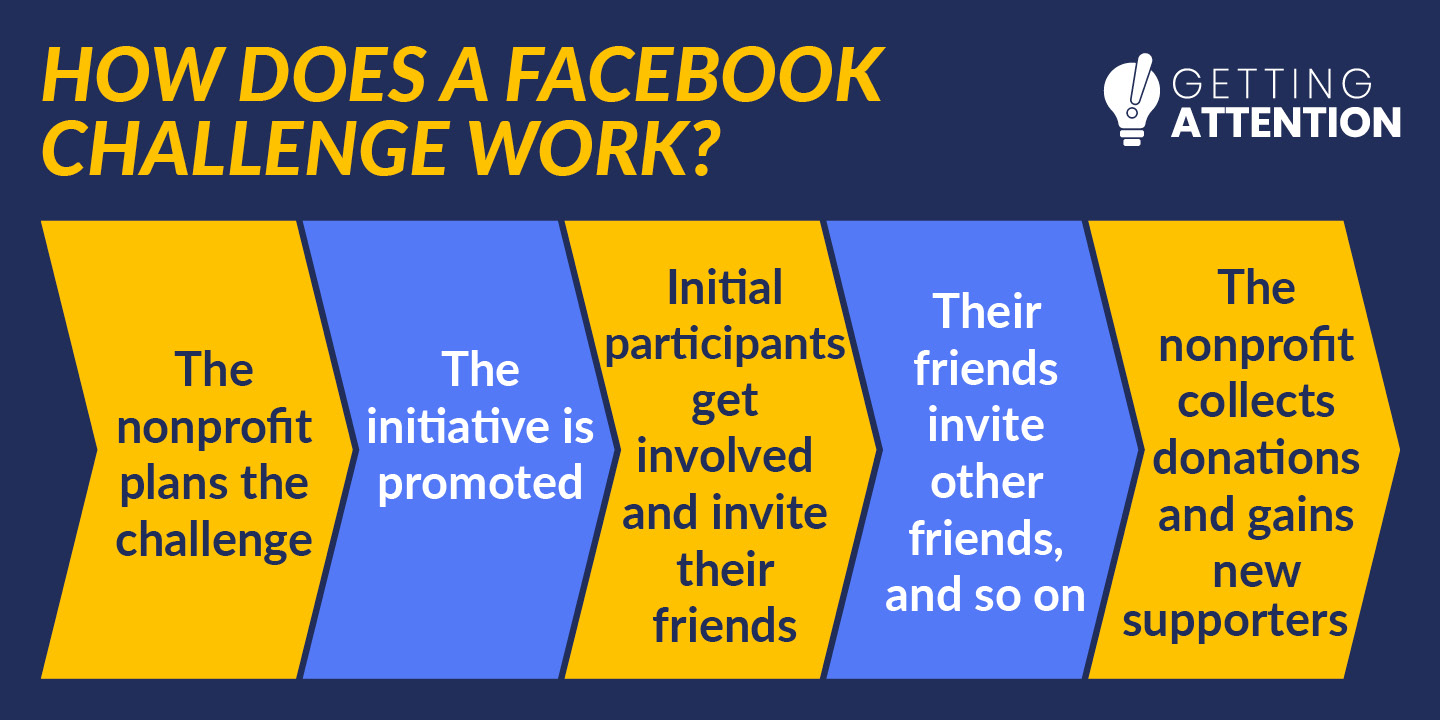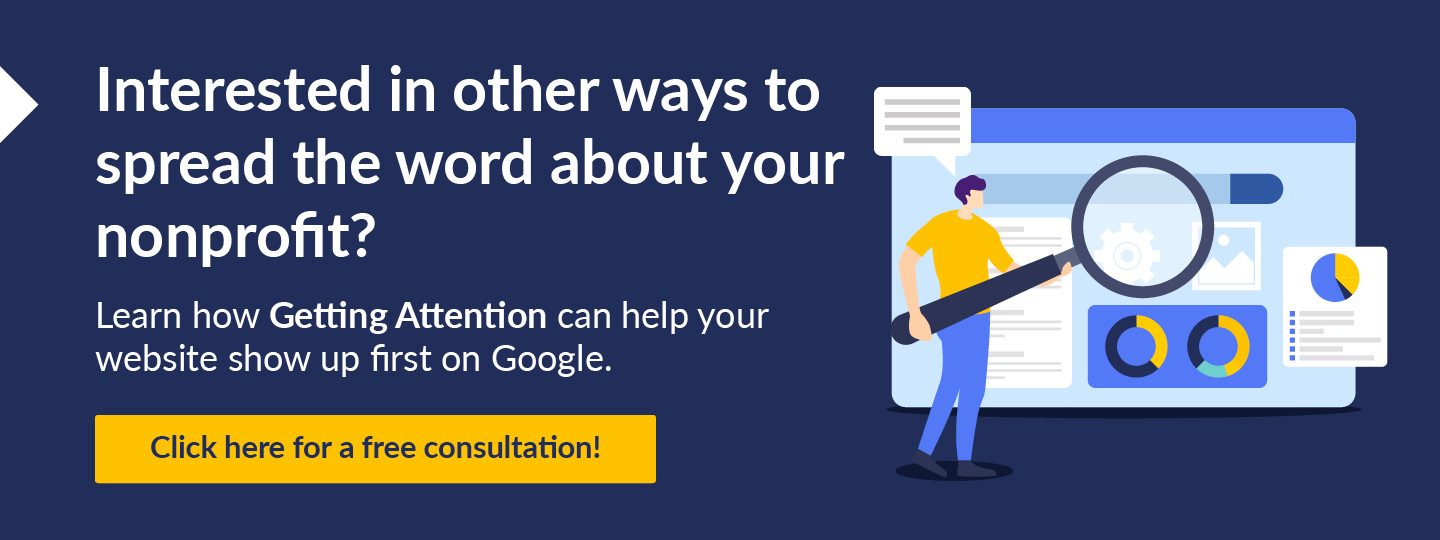Facebook Challenges: Social Media Fundraising for Nonprofits
Social media has proven to be an effective fundraising tool for nonprofits. Its popularity maximizes the online visibility of a nonprofit’s cause and reaches wider audiences than possible via other marketing channels. With Facebook, your nonprofit can take the power of social media a step further with a peer-to-peer initiative that raises funds and awareness through engaging challenges.
In this guide, we’ll explore the basics of Facebook Challenges for nonprofits and how these organizations can leverage social media to raise funds for their missions:
- What are Facebook Challenges?
- How to start a Facebook Challenge
- Facebook Challenge ideas for nonprofits
According to 360MatchPro’s fundraising statistics, “of those inspired to give via social media, 56% were most impacted by Facebook posts.” Are you ready to unlock the full potential of this platform and garner the support of those social media donors? Let’s begin with some background on Facebook Challenges.
What are Facebook Challenges?
Have you ever seen a movie where the main character was dared by his friends to do something outrageous? Think about the impact of that activity on the plot of the movie—did the characters get themselves in a bind because of the dare? Did a chain of events follow that impacted the storyline?
Take that impact and multiply it by the reach of digital platforms like social media. Most times, when someone is dared to do something, they follow through with it. When these challenges are posted for everyone to see, people are even more pressured to participate.
In a Facebook Challenge, nonprofits challenge Facebook users to complete an activity and post their progress or results on social media. The activities are launched to raise awareness and donations for a nonprofit’s cause. Here’s how it works:

- The nonprofit plans the challenge. You’ll come up with an activity, a fundraising goal, and the other logistics of your Facebook Challenge.
- The challenge is promoted. After establishing the basics of your challenge, you’ll spread the word about your activity through your marketing channels. Remember to leverage all your social media accounts for promotion purposes, even though the fundraiser will take place on Facebook.
- Initial participants get involved and invite their friends. Depend on active volunteers, supporters, board members, and employees to get the ball rolling. Request that they invite their friends to help expand the fundraiser’s visibility.
- Their friends invite other friends, and so on. The challenge will naturally jump from social group to social group, expanding to audiences that have no current affiliation with your organization. You’ll use Facebook’s Fundraising tool to collect donations as the challenge progresses.
- The nonprofit collects donations and gains new supporters. As supporters complete the activity, make donations, and urge their friends to do the same, your nonprofit will collect donations and likely gain new Facebook followers.
Don’t think of Facebook Challenges as a simple fundraiser or advocacy strategy—these activities can deeply engage donors by urging them to take action (in more ways than one)! Let’s take a closer look at everything you’ll need to do to start a Facebook Challenge.
How to Start a Facebook Challenge
Now that you know the basics of a Facebook Challenge, let’s review the steps to get started with this fundraising tool:

1. Plan your Facebook Challenge.
First, your nonprofit should prepare for its Facebook Challenge by planning the logistics of the fundraiser. You’ll need to establish:
- The duration of the challenge: How long will your challenge last? Is it a time-based challenge, such as a challenge to stop eating sugar for 30 days?
- The challenge activity: What activity are you challenging supporters to do? Will it relate to your nonprofit’s mission in some way, or will it be a random task that simply opens the door for your nonprofit to talk about its cause?
- Your fundraising goal: How much do you need to raise with this challenge? Share this goal with supporters to further incentivize sharing, participating, and giving.
Remember that your Facebook Challenge is one element of your overall marketing strategy. As you plan the activity and duration, think about how the challenge will fit in with the rest of your fundraising initiatives.
After establishing the basics of your challenge, you’ll need to prepare the rest of your team. Staff members and volunteers must be on the same page about your fundraiser and the goal of the challenge, especially when they’re advocating on behalf of your nonprofit.
2. Create Facebook Ads.
Use Facebook’s resources to develop advertisements that will promote your fundraiser and nonprofit. All you’ll need to create Facebook Ads are:
- Images: Include images of your organization’s logo, your volunteers at work, or your beneficiaries receiving the help they need. Depending on the duration of the challenge, you might even include images of supporters engaging in the challenge activity (with their permission, of course).
- Ad copy: Provide information about your nonprofit, but remember to keep your focus on the challenge. Think about it like this: If readers were to glance at your message, their main takeaway should be the activity and deadline of the challenge. Use your organization’s brand messaging and tone to further solidify the ad’s legitimacy.
Facebook’s algorithm will combine the images and text to create ads for you. Then, these advertisements will show up on Facebook users’ feeds. Although this is a helpful way to spread the word about your fundraiser, you’ll need to do some marketing of your own, as well. That’s where your nonprofit’s website comes in!
3. Create an event landing page.
Your nonprofit’s website hosts the most important information about all your other fundraisers, so it only makes sense that you’d include information about your Facebook Challenge there, too. It’s a great resource for providing more information about the challenge and its progress.
When creating your landing page, ensure it’s optimized for mobile use. That way, your supporters can switch straight from the Facebook app to their phone browser without missing a beat. You should also include the following information about your challenge:
- An explanation of the challenge
- Visualization of your fundraising progress
- A link to your Facebook page
Not only does this encourage viewers to engage in the challenge but it can draw in larger audiences when your website receives new visitors. Plus, if your nonprofit leverages the Google Ad Grant, you’re already on the right track to promote your website (and challenge)!
The program can be a significant undertaking, so it may be helpful to recruit Getting Attention’s help to manage your Google Ad Grant. That way, you can focus on sharing social media posts while your Google Ads do the work for your website.
4. Start a Facebook group.
Instead of simply providing your supporters with information, invite open communication by establishing a way for them to get in touch with your organization. Create a Facebook group to bring all your participants together—staff members, volunteers, supporters, and people who have never even heard of your cause!
5. Write fundraiser templates.
As your challenge is passed along from Facebook user to Facebook user, it’s likely the message won’t stay quite the same. Unfamiliarity with your message is both an opportunity to educate new audiences and a pitfall that can be overcome with fundraiser templates!
A fundraiser template is a ready-made message that Facebook users can copy and paste to post when they participate in and share your challenge. To effectively spread the word about your cause, the message should include:
- An eye-catching opener that encourages scrollers to stop and read.
- Background information about your cause.
- A compelling request for participation and donations.
- Testimonials that speak to your nonprofit’s credibility.
- A hashtag related to your campaign to make it easy to find supporters’ posts.
Then, let the participation begin! The challenge will soon carry itself after you finish setting it up because the peer-to-peer nature of the fundraiser follows a cycle:

- Users click on the Facebook Ad
- Supporters participate and donate
- Participants share the challenge
After the challenge is shared, more Facebook users will click on the ad and participate or donate. Just let the cycle repeat itself for the duration of your Facebook challenge!
Facebook Challenge Ideas for Nonprofits
Some Facebook Challenges relate to the organization’s mission, such as the American Heart Association’s 60 Miles in June in Honor Challenge. Others are a little more random, like the Ice Bucket Challenge, which involved dumping a bucket of ice over someone’s head to support research on Amyotrophic Lateral Sclerosis (ALS).
Whether your nonprofit wants to promote an activity related to its cause or simply start a fun challenge that will also raise money and awareness, there’s a Facebook Challenge for everyone! Check out these types of challenges to help your brainstorming.

Philanthropic challenges
No matter the activity of your challenge, you’ll ultimately want to garner support from a larger audience. Encourage participants to complete a philanthropic challenge in support of your cause, such as:
- Volunteering: Challenge participants to volunteer either at your nonprofit or a related organization. Measure their contribution in hours volunteered or the number of volunteer activities they attended.
- Random act of kindness: Encourage participants to commit an act of kindness. The participant can choose their action and do it for a friend or stranger—it’s up to them! They’ll share their experience on social media along with a reminder to donate to help your organization fund its acts of kindness.
These types of challenges allow for some flexibility since there are numerous ways participants could volunteer their time or show kindness to others. Sometimes this flexibility can be nice, but be sure to set reasonable parameters for your challenge so that the activity is recognizable and tied to your fundraising initiative.
Fitness challenges
Physical activity can be quite the challenge—and not just as a fundraising initiative on Facebook! Few activities are quite as taxing as fitness challenges, and your supporters will put their athleticism to the test when they engage in these challenges:
- Exercise: Activities like walking and running can be easy challenges to encourage supporters to get active! You can get even more creative by hosting a challenge specific to a muscle group. For example, you might host a “chest challenge” in which participants must complete a chest workout every two days.
- Mental health: Keep in mind that fitness challenges should focus on participants’ overall health, not just physical wellness! Challenge participants to journal every day, meditate, or complete another activity that boosts their mental well-being.
Fitness challenges are typically measured by distance or time. For example, you could challenge supporters to run ten miles or run for ten minutes. The ten-mile race might be a one-time challenge, whereas the time-based activity could be repeated every day, such as by running for ten minutes daily.
Dietary challenges
Much like fitness challenges, dietary challenges are a great way to encourage supporters to improve their lifestyles. You can take several approaches to dietary challenges:

- Omit a food: Participants might remove a food (or food group) from their diet. For example, they may stop drinking soda or reduce their sugar intake overall.
- Add a food: Who wouldn’t benefit from a few extra vegetables? Challenge your supporters to increase their intake of certain nutrients or nutrient-rich foods.
- Overall diet changes: Sometimes, your diet could stand to lose some food and gain others. A dietary challenge could be based on a comprehensive list of guidelines that improve diets overall.
Take a creative approach to dietary challenges by allowing supporters to make their own choices. For example, if a Facebook user wants to improve their hydration by drinking more water daily, they might explain their choice and share their progress in a post.
Comedic challenges
Challenges are difficult by nature—make it lighthearted with an activity that’s a little goofy! Comedic challenges can be anything you find entertaining, but some great ideas include:
- Try not to laugh: Users might record videos of themselves reacting to comedic videos or pictures and trying not to laugh. They can measure this challenge based on the number of videos watched or the amount of time gone without laughing.
- Wacky clothing: What’s more fun than a funky costume? Challenge supporters to wear a wacky outfit to school, work, social outings, or any other event they go to. They might take a picture of their outfit and share it, then encourage their friends to do the same in honor of your cause.
The opportunities are endless when it comes to comedic Facebook challenges. Think of fun, wacky ways for users to show their support and turn it into a challenge!
Conclusion and Additional Resources
Facebook Challenges can be highly advantageous if your nonprofit plans and executes them correctly! Use your creativity to craft a fun Facebook Challenge that your social media followers won’t be able to resist. For more help brainstorming, ask your supporters for their input. As the ones participating in the activity, they’ll have the best ideas for appealing challenges.
If you’re interested in learning more about promoting your nonprofit organization’s cause, check out the following resources:
- What Is A Google Ad Grant? The Ultimate Guide for Nonprofits. Interested in other ways to promote your cause? Read this guide to learn how you can earn free advertising money!
- Facebook for Nonprofits – Nonprofit Catalog. Want to know more about social media marketing for your organization? Learn how nonprofits incorporate Facebook into their strategies in this guide.
- Multiply Your Fundraising With Double the Donation’s Matching Gift Database Tool. Looking to expand your donation tools beyond Facebook Fundraising capabilities? Check out Double the Donation’s comprehensive database and company search tool for matching gifts.






